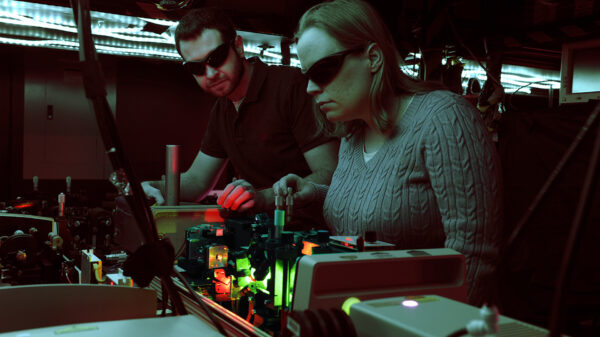In a recent interview with Ron Baron, Elon Musk revealed ambitious plans to launch an impressive 100 gigawatts of **AI-driven satellites**, powered by **solar energy**, into orbit annually. Musk shared the insights on the social media platform X, emphasizing the potential of this method to operate and scale **AI** technology at the lowest possible cost. “We see a feasible path to launching 100 gigawatts of AI-driven satellites powered by solar energy into orbit annually,” Musk stated, highlighting the significant scale he envisions.
For context, Musk pointed out that the **average annual electricity consumption** in the United States is approximately **460 gigawatts**. He noted that this consumption correlates to roughly one-quarter of the total annual electricity production in the U.S. His assertion underlines not just the feasibility but the monumental implications of such a project, stating, “It’s absolutely mind-blowing.” This ambitious initiative could have far-reaching effects on both the energy sector and the AI landscape.
In a follow-up post, Musk acknowledged the challenges associated with deploying this technology by stating, “Deploying 100 gigawatts of AI in space annually will be a challenging path, but we know how to do it.” His confidence in overcoming these challenges speaks to SpaceX’s track record of innovation and technological advancements in the aerospace sector.
Implications for AI and Energy Sectors
The intersection of **AI** and renewable energy is becoming increasingly crucial in addressing climate change and energy efficiency. By harnessing solar energy to power **AI** satellites, Musk’s proposal could signify a pivotal shift in how both sectors operate. This synergy not only promotes **sustainable practices** but also paves the way for more efficient technologies that can adapt to fluctuating energy demands.
See also AI Chatbot Therapist Encourages Dangerous Medication Tapering, Raises Ethical Concerns
AI Chatbot Therapist Encourages Dangerous Medication Tapering, Raises Ethical ConcernsThis strategy could potentially revolutionize various industries, from telecommunications to data processing. The implications stretch beyond mere energy consumption; they suggest a future where **AI systems** can operate from orbit, offering enhanced connectivity and data processing capabilities globally. As AI models grow in complexity and demand for computational power increases, Musk’s vision could play a vital role in meeting these needs sustainably.
Moreover, as Musk’s initiatives often attract attention and skepticism alike, the discussion surrounding his plans for these satellites could ignite conversations about the ethical and operational implications of deploying such technology. Questions surrounding data privacy, surveillance, and the environmental impact of large-scale satellite deployment will likely emerge as the plan develops.
Challenges Ahead
Despite the ambitious nature of this project, Musk himself has acknowledged its challenges. Developing the necessary technology to launch and maintain 100 gigawatts of satellites annually will require substantial advancements in various fields, including aerospace engineering, **artificial intelligence**, and renewable energy capture and storage. Moreover, regulatory hurdles and global collaboration will be essential to navigate the complex landscape of international space law and environmental regulations.
In conclusion, Musk’s vision of launching 100 gigawatts of AI-powered solar satellites into orbit presents an intriguing glimpse into the future of **AI** and renewable energy. The potential benefits of this initiative could reshape our approach to both technology and sustainability, although the path forward will demand significant innovation and cooperation across multiple sectors. As technology continues to evolve, the global community must engage in thoughtful discussions about the implications of such advancements.








































































